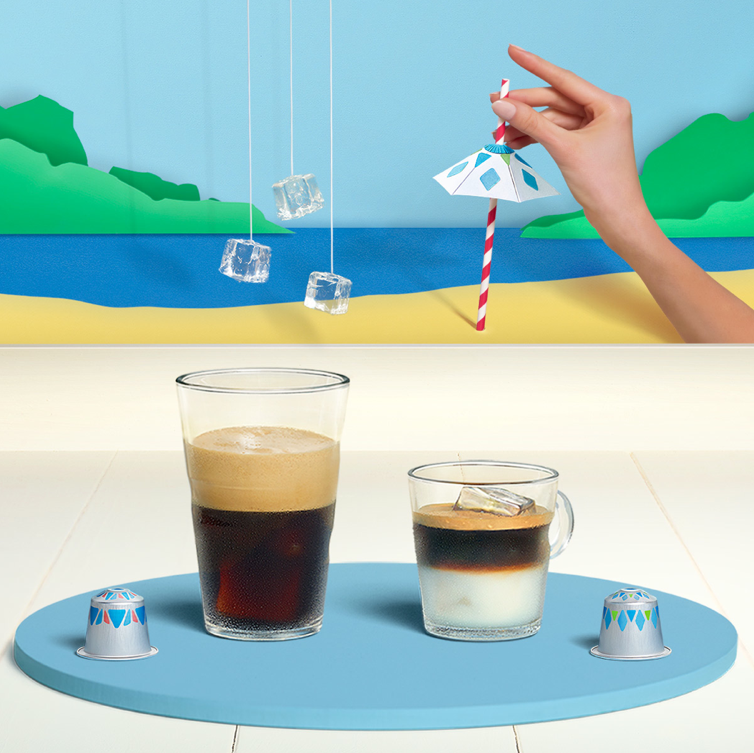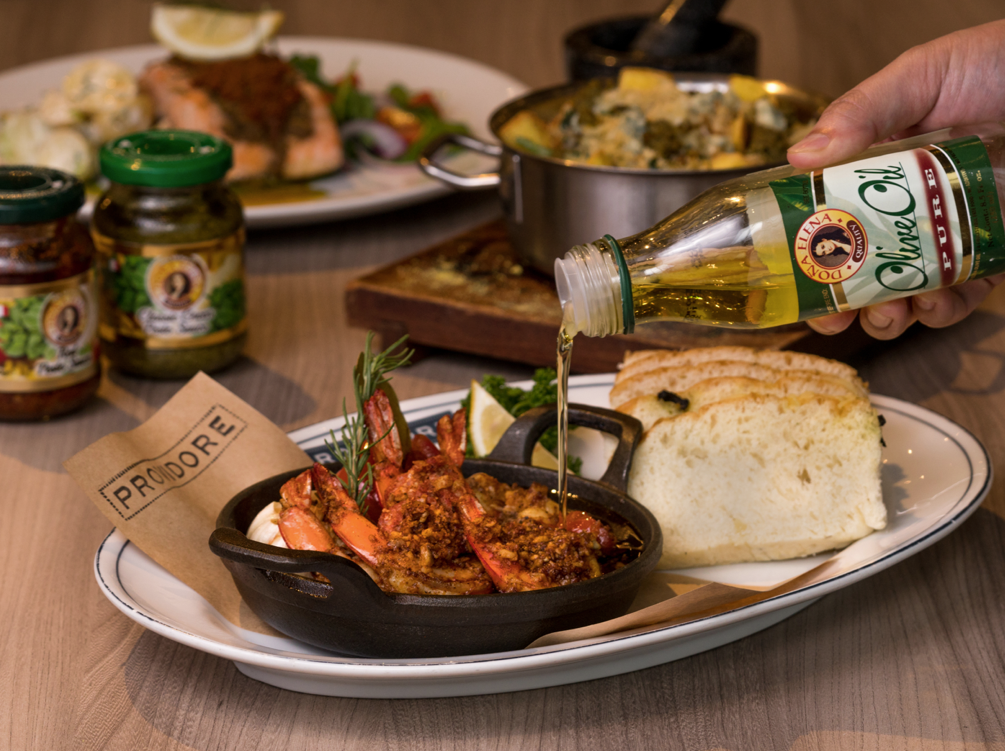This hip, stylish restaurant brings Spanish heritage closer to hearts (and bellies) in Bicol and beyond
I do not consider myself a food snob – quite the opposite, actually. For instance, my palate does not shy away from enjoying meals at humble JolliJeeps (our local versions of food trucks), and there are actually a few of these kitchens on wheels whose offerings make me salivate. But that topic is for another food feature. However, as a Spanish national (albeit, born-and-raised in Manila) living in the Philippines, I do tend to approach local versions of Spanish cuisine with one eyebrow raised. Are the croquetas creamy and savory, do they melt in your mouth? Are the churros crisp on the outside, chewy on the inside, or are they too doughy? Does the paella have just the right balance of flavors and bite, or is the rice overcooked and the taste overpowering? Are the callos sticky and hearty or is the sauce a touch watery? What about the tortilla de patata, is it done to flaky-yet-firm perfection? The list goes on.
I cannot help it; the benchmark for me, after all, is none other than Spanish food the way my beloved Abuelita used to make it. As such, I have dined at many-a-restaurant in Manila, only to be disappointed by a number of them. Imagine then, my delight, to find an establishment that serves authentic Spanish cuisine of which even my Abu would give her nod of approval: Qué Pasa in Naga, Bicol.
What’s up, Naga?
Qué Pasa first opened its doors to Naga’s foodies four years ago, a brainchild of the same group that birthed the area’s popular Bigg’s Diner many decades ago. But it wasn’t until June of this year that the restaurant came into the fullness of its appetite-satiating identity. What started out as a simple barbeque-skewer eatery has evolved into a haven for Spanish food; one that showcases the culinary side of Spanish legacy in the Philippines.
“When Qué Pasa first opened, it was an informal barbeque place. That’s actually how we came up with the name, as a play on the ‘que’ part of barbeque,” Carlo Buenaflor, CEO of Bigg’s Diner and honorary consul of the Spanish consulate in Legazpi City explains. “But there was a clamor from regulars to turn it into a restaurant with a more formal menu, a more authentic Spanish experience. So, we responded to that clamor.”
In response, as well, to that clamor, Chef Jet Sumayao (who served as Chef de Partie to Spanish chef, Chele González of the highly-acclaimed Gallery Vask in Manila) joined the team as Executive Chef. While it is too soon in the game to say that the rest is history, it is most certainly history in the making.
Aside from being a play on the word barbeque, the phrase “Qué pasa?” translates as “What’s up?” The answer to this question is simple: in the restaurant’s corner of Naga, across the grand Porta Mariae triumphal arch on Barlin St., what’s up is a culinary celebration of mouthwatering heritage, cooked-up in oh-so-delicious ways.
A nod to Spanish heritage
A visit to Qué Pasa is a mini-history lesson, expertly taught by the restaurant’s menu offerings. Bestsellers include all the items I mentioned above, skillfully concocted with pride and passion by Chef Jet: Croquetas de Pollo, Paella Valenciana, Paella de Mariscos, Sopa de Ajo, Pollo Asado, Tortilla de Patatas, Cedo con Chorizo, and Churros con Chocolate, to name a few foodie favorites. Each dish is prepared using traditional methods, with customary ingredients, many of which are freshly sourced from Bicol’s verdant farms.
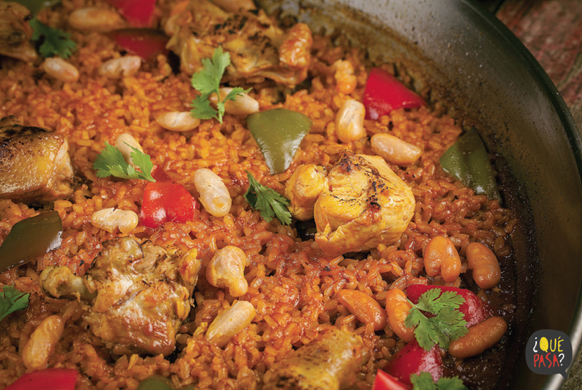
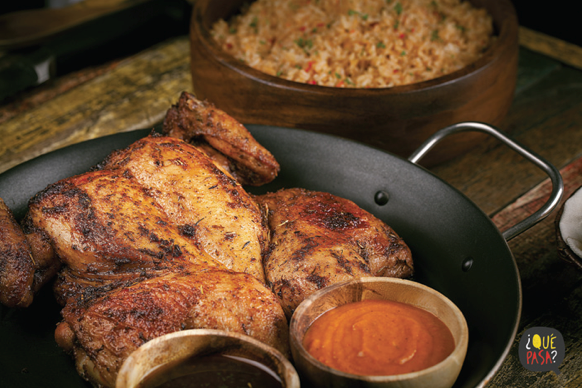
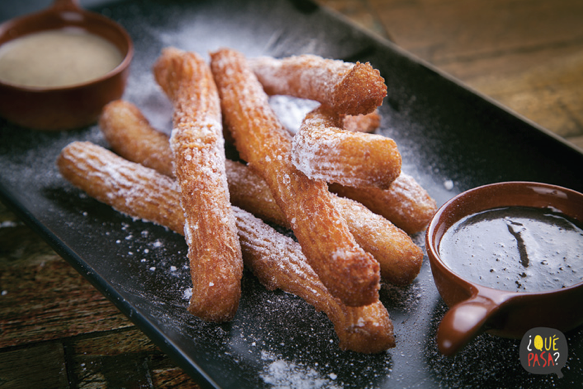
“We don’t want to be a confusing cuisine,” shares Le Cordon Bleu Paris-trained restaurateur Rica Buenaflor. “It is, however, also our advocacy to promote Bicolano cuisine, which we plan to eventually do here. So, our goal at Qué Pasa is to feature our Spanish heritage through authentic dishes, then later on inject touches of Bicolano fare, like maybe a laing paella. For now, though, our menu is entirely Spanish.”
“Naga, historically, is significant because it was one of four Royal Cities of Spain during the Spanish occupation. So, it only makes sense for the province to have a restaurant that celebrates the ties between Spain and the Philippines. When people learn about the history of Naga and how it played a big part in the Spanish-Colonial era, the next question is often ‘Is there a place where we can sample the Spanish influence of food in the Philippines?’ Qué Pasa fills that need and adds to the historic significance of Naga,” Carlo explains.
More than a Spanish restaurant
Aside from being a home to tasty Spanish eats, it is also at once evident that Qué Pasa is a pedestal for vibrant, even whimsical, art. What was once an old house, razed nearly to the ground some years back, has been reconstructed in traditional pueblo-style with touches of modern flair. Portals and arches are all emblazoned with murals of Spanish pop-culture and literary work, designed by local artists like weaver, painter, and heritage advocate, Bernadette ‘BidiBidi’ De Los Santos. Sculptures and curio items are positioned, just so, throughout the place. Neon letters shine brightly atop the bar, vividly spelling out the restaurant’s name in a blaze of red and yellow. The design aesthetic is a seamless fusion of Spanish sensibilities and rustic, industrial influence. It works; moreover, it appeals to a range of tastes and generations.
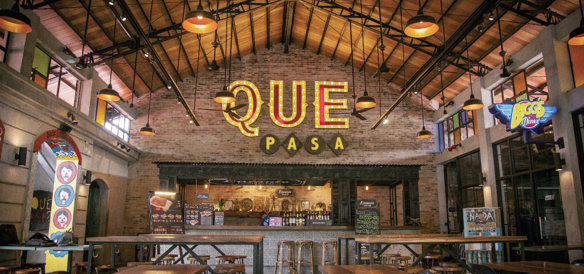
We were lucky enough to have visited the restaurant during its annual celebration of Philippine Spanish Friendship Day on June 30, with none other than Vice President Leni Robredo, a daughter of Bicol, gracing the occasion. It was an extra treat to witness song and dance numbers reflective of the cultures of each country, in fulfilment of the Buenaflors’ desire for Qué Pasa to be not just a place for really good food, but also a venue for historical, cultural, and artistic events.
Yes; imagine my delight to find an establishment that serves authentic Spanish cuisine very close to how my Abuelita used to make it, in a venue that tickles my art-loving heart. Now, imagine my desire to trek to Naga every chance I get. Who knows? Maybe Qué Pasa will be saying “What’s up, Manila?” in the hopefully not-too-distant and flavorful future.
By ANGIE DUARTE









